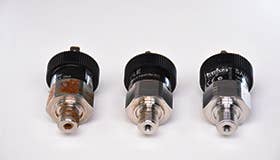Smart parameterization app and cable protection for level probes
Amazing new solutions for well-known problems in hydrostatic filling level measurement are possible: On the one hand by using a smartphone app. On the other hand through the use of a tried and tested cable gland from the process- and chemical engineering sector.
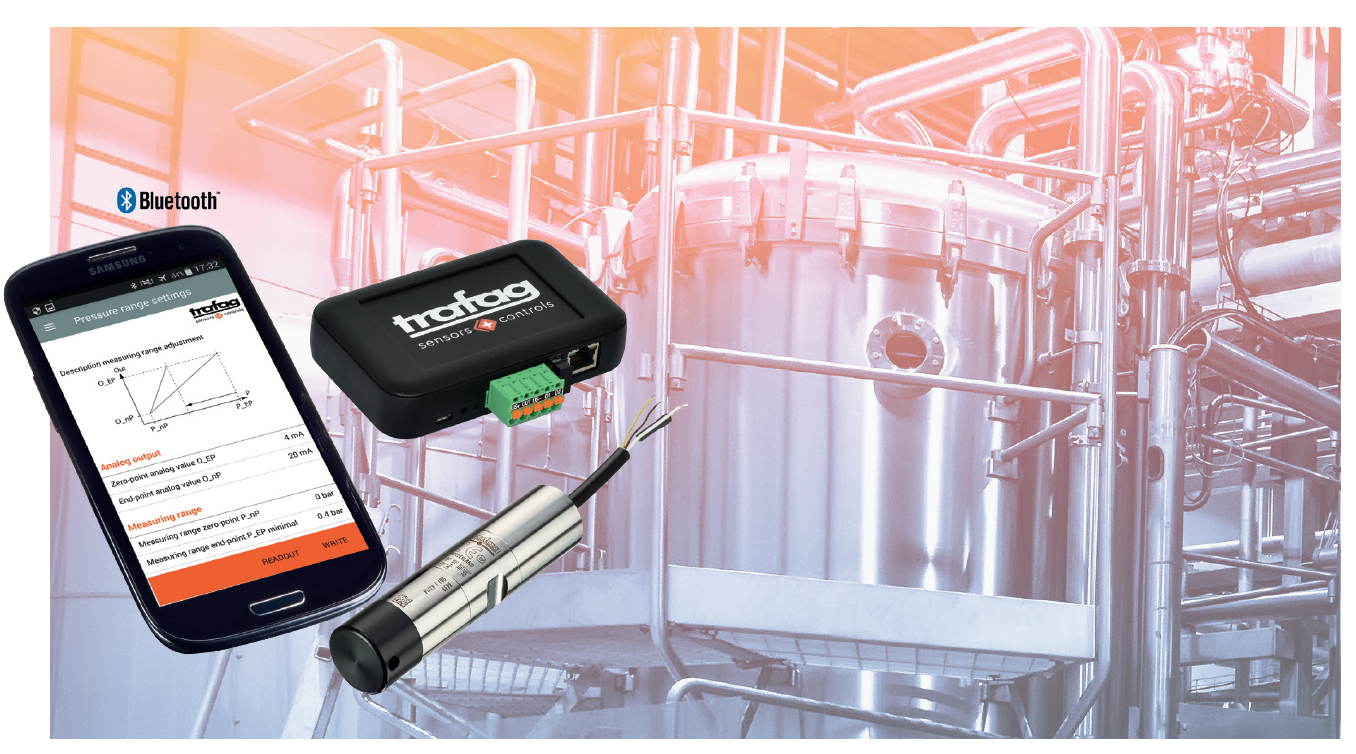

Filling level measurement in tanks on ships is a broad field: Fuels, ballast water, potable and process water, lubricants and coolants – all in tanks having different sizes, shapes and structures – and the fillinglevel must be monitored continuously everywhere. In addition to the various media, which vary greatly with regard to their chemical and physical properties, the tanks and their monitoring systems are alsocompletely different. Because the measuring range of the filling level transmitter depends on the tank height and the density of the medium (see figure), either the corresponding values are parameterized in the control - which requires a somewhat more complex control and especially an input option - or the filling level sensors are calibrated for the required individual pressure measurement range. The main disadvantages of the individual calibration are the longer delivery times, due to the sensor having to be specially made, and the more complex warehousing, when replacement parts for various installations have to be kept available at a central location.
Parameterizing the pressure sensor with a smartphone app
Individual special transmitters in the upper price range can be configured via a special tool on a PC. This is where the innovative solution from Trafag is applied: Standard filling-level transmitters are configured with an intuitively usable Android app. For this, only a special Trafag interface tool is required, as well as a voltage source in the form of a «powerbank». With this, the measuring instruments can be parameterized quickly, easily and mobilely. The parameter sets can be saved as files or be sent via e-mail: as a result, in the case of replacement part deliveries, the original parameter set can be loaded onto the replacement device in just a few seconds.
This opens up new options for manufacturers of tank and pump control systems: One can take a simple, completely standardized control (which also does not require a convenient programming interface) to input the tank and fluid parameters. Then one can parameterize the filling level sensor with a smartphone (at latest) on site during installation based on the local situation and then save the data in the project documentation. This results in a very streamlined solution, which can particularly be used to realize simple tank control and monitoring systems very cost-effectively. Since exactly the same version is used every time, the optimum solution is achieved here with regard to the warehousing of the initial installation and replacement parts.
Installing the transmitter directly on the steel pipe in the tank
To prevent openings at the tank, and therefore potential leak problems, the pressure transmitters are usually introduced into the tank suspended by a cable from above through special openings and immersed in the medium to be measured (see figure). Because both the measuring probe as well as the cable are in the tank and hang freely, there are mainly two aspects, in addition to media compatibility (e.g. in the case of aggressive media), which measure another level than intended as a result. There is a risk that the cable sheath will be damaged during installation or operation, allowing fluid to get into the transmitter between the cable sheath and cable wires, resulting in electronic failure within a very short time. The penetration of fluid into the pressure transmitter is the most frequent cause of failure in immersed level probes.
The transmitters are often provided with an additional weight to prevent them from being pulled along with the flow or are fastened to the tank wall. Special cable protection is rarely realized. Trafag offers an especially clever solution: There is an interface on the pressure transmitter for a special Serto® screw joint. With this metallic-sealing screw joint, a simple metal pipe can be pushed over the cable and screwed bluntly with the adapter included in delivery (see figure). Of course, this solution is somewhat more expensive than a bare cable, but it offers a wide range of advantages:
- The stainless steel pipe optimally protects the cable from damage, including to the cable sheath.
- The steel pipe is firmly mounted to the upper part of the tank and fixes the immersed transmitter in its position, independent of any flows.
- The entire upper part of the transmitter, including the cable, is insulated from the medium with the stainless steel pipe and leak-tight screw joint. Especially in the case of aggressive media or such where one is not sure of the effective composition, such as waste water, one can then do without an expensive, media-compatible cable and select the most cost-effective cable material.
- In the case of very deep tanks, the pipe can be welded in the lower area of the tank, saving a lot of cable length and wiring work (from the upper section of the tank).
- Optimal equipotential bonding is ensured by the metallic connection of the sensor housing with the tank, which protects the transmitter even better, with regard to EMC as well as with regard to electrochemical corrosion. The adapter system has been tried and tested for years and is safe and easy to install - all you need is a metal saw, a file and an openend wrench. It is also corrosion- and ageing-resistant thanks to the metallic seal. All necessary parts except for the steel pipe and the assembly tools are included directly in delivery with the Trafag pressure transmitter.
These two examples will show how often unforeseen options open up for well-known problems thanks to innovative approaches.
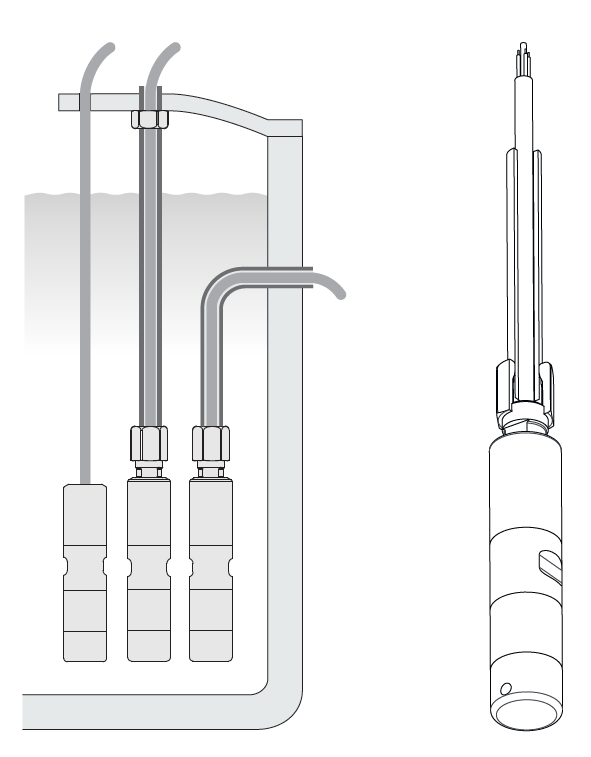

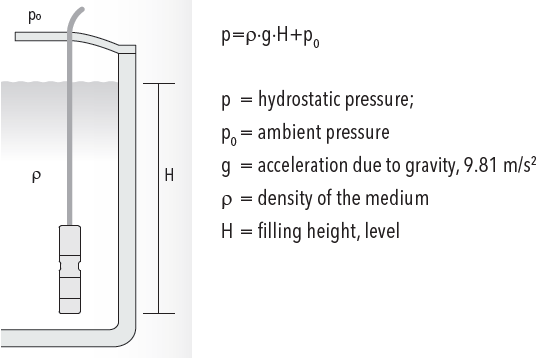

Hydrostatic filling level measurement
The hydrostatic filling level measurement has established itself as a cost-effective, reliable and versatile measuring principle for standard filling level measurement. Here, a pressure transmitter (also called a pressure transducer) measures the pressure at the bottom of the tank. The filling level can be calculated from the measured pressure together with the fluid density. The analogue measurement signal of the filling level sensor ideally ranges between 0% when the tank is empty and 100 % when the tank is full. Since hydrostatic filling level sensors do not measure the level directly, but measure the applied pressure, the maximum filling height and density of the measured medium must be taken into account in the dimensioning of the pressure measuring range.
Submersible pressure transmitter ECL 8439
The Submersible pressure transmitter ECL is based on Trafag’s own thick-film-onceramic technology. The optionally configurable pressure ranges can be adapted individually via the interface tool Sensor master interface SMI and a smartphone App.
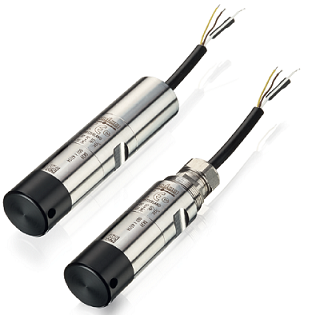

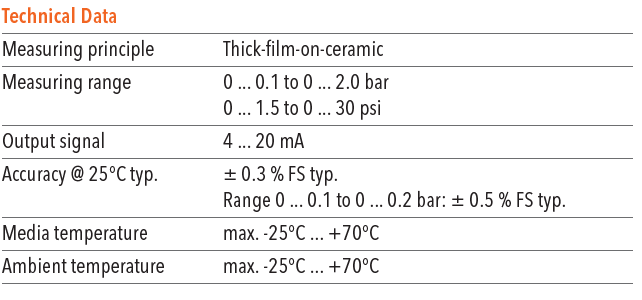

Would you like to read the whitepaper later?
Do you have any questions about smart parameterization app and cable protection for level probes?
We'd be glad to help. Please get in touch with us.




